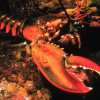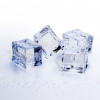How do you forecast the weather?
Question
How do you forecast the weather?
Answer
Chris put this question to meteorologist Jim Bacon...
Jim - I think the easiest way to describe what happens in the modern meteorologists office would be that most of us will be looking at the output from the mathematical models of the atmosphere and using raw data coming in to represent a starting condition. You can then use the equations of the atmosphere - how the the air moves how it exchanges energy, how it exchanges temperature, moisture and so on. Those parameters can be represented with equations in the model and it will predict what those numbers look like in a short time step ahead. And if you keep leapfrogging those far enough into the future you can get an idea of what the temperature field display would look like in six hours time. And models now - I used to work as a programmer in the Met Office at Bracknell and this was in the 70s before we all had computers at home and the models would split the atmosphere all over the globe up into - it's a bit like imagine an onion with several different layers and on that onion there are lines that cross like latitude and longitude lines and each of those grid points represents a data value. And in those days the computing power was so limited that the data points were 150 kilometers apart and there were 10 onion skins in this model that represented the real virtual weather. So what happened is that as computers got quicker and more able, we now have models that have data points 4 kilometres apart used regularly to drive your TV graphics for example and a lot of aviation meteorology, in some specialist cases they’re 1 kilometre apart. They don’t have 10 onion skins if you like. They have 90. So they're much better able to represent the real physics of the atmosphere. So forecasts have become much better and you can move them farther ahead in time and still get a good result.
Chris - So when you say there is a model, basically people like yourself have written computer programs that know what the atmosphere does and they put some energy in and how it's going to move, how the air masses are going to move and how their energy is going to change the behavior of that patch of the earth's surface. And so we know from experience but also from modeling how it's likely to play out how that's going to move around and therefore what it's going to do to weather patterns and systems around the world.
Jim - That's essentially it. And the interesting follow on from that actually which is probably far more significant in importance, is that when you've tuned your models to be successful in the short term, you know pretty well that the physics is working reasonably well. They're still not powerful enough to represent individual shower clouds accurately but they can get them in a sort of parameterised way but nonetheless the interesting point is that once you know they work, what's to stop you running it not for next week or the week after, but running it for next year, the year after that and the year after that and so on? So you run these models for a model world's worth of 30 years data and see if the average temperatures that you calculate match the average temperatures that we have in our current climate. So you've calibrated the model to represent what we have now and then you can play God and do all the things that climate change people are interested in, which is you can chop down the Amazon rainforest you can irrigate the deserts, you can melt the polar ice caps and you can run the models again and see how those values change. Now you won't be able to represent it exactly but you give the scale of direction of where it will go. And it's the refining of those models that gives people the various answers about what climate change might look like in 100 years time.










Comments
Can't understand
Onion skins as an example? i don't get any of it.
Add a comment